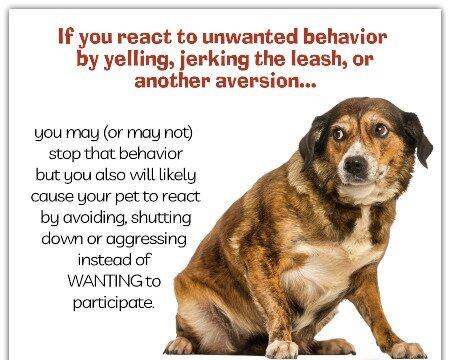Understanding Unwanted Pet Behaviours
Unwanted pet behaviours refer to actions by pets that are deemed disruptive or inappropriate by pet owners. These behaviours can range from mild annoyances to severe disruptions, which can significantly affect the relationship between the pet and the owner.
Common Examples of Unwanted Pet Behaviours
Some of the most common examples of unwanted pet behaviours include excessive barking, biting, aggression towards other animals or people, and destruction of property. These behaviours can cause significant stress for both the pet and the owner, and if not addressed, can cause serious issues in the home.
The Underlying Reasons for Such Behaviours
Often, these unwanted behaviours are a result of stress, anxiety, fear, or boredom. Pets may also exhibit these behaviours due to lack of proper training or socialisation, or as a result of medical issues.
Understanding the root causes of these behaviours is the first step in effectively managing and preventing them. It’s important to seek professional help if your pet’s behaviour is causing significant distress or harm.
The Role of Training in Mitigating Unwanted Pet Behaviours
Training is vitally important in managing pet behaviour. It not only helps to prevent unwanted behaviours but also promotes a strong bond between you and your pet. Without adequate training, pets may display aggression, anxiety, or other disruptive behaviours. Pet training, when done correctly, can significantly improve the quality of life for both pets and their owners.
Types of Training Methods
There is a myriad of pet training methods available, with the most common being positive reinforcement and clicker training. Positive reinforcement involves rewarding good behaviours which encourages pets to repeat them. Clicker training, on the other hand, uses a clicker to mark the exact moment a pet performs a desired behaviour, followed by a reward. These methods are generally considered to be the most effective and humane ways to train pets.
When to Start Training Your Pet
The best time to begin training your pet is as early as possible. Young animals are more receptive to learning new behaviours and habits, making it easier to instil desirable behaviours from a young age. However, it’s never too late to start training an older pet. With patience and consistency, even senior pets can learn new tricks.
Common Mistakes Pet Owners Make When Dealing with Unwanted Behaviours
Understanding your pet’s behaviour is crucial for a harmonious coexistence. Many pet owners inadvertently commit errors that can exacerbate unwanted behaviours. Here are some common missteps to avoid:
- Ignoring the behaviour: Pets communicate through their actions, and ignoring them could lead to escalation. If your pet exhibits unusual behaviour, it could indicate physical or emotional distress.
- Punishing the pet: Animals don’t understand punishment the way humans do. Instead of correcting the behaviour, punishing can lead to fear or aggression. The ASPCA provides resources on positive reinforcement training.
- Reinforcing unwanted behaviour: You might be unintentionally rewarding your pet’s bad behaviour. For example, giving attention to a barking dog can encourage more barking.
- Inconsistent training or lack of persistence: Consistency is key in training. Regular training sessions and consistent messaging help your pet understand and remember the desired behaviour.

By avoiding these common mistakes, you’ll create a more positive environment for your pet and yourself. Remember, patience and understanding are key in dealing with unwanted pet behaviours.
Understanding Behavioural Modification Techniques
Behavioural modification is a systematic approach to changing undesirable behaviours in pets, replacing them with more favourable ones. This method is based on the principles of operant conditioning, a learning process where consequences are used to modify the occurrence and form of behaviour.
Key Techniques in Behavioural Modification
- Counter Conditioning: This involves changing your pet’s emotional response to a stimulus, thereby altering their behaviour.
- Desensitisation: Gradual exposure to a stimulus that causes unwanted behaviour, reducing their negative reaction over time.
These techniques help create a positive environment for your pet, making it easier to eliminate unwanted behaviours.
I would suggest adding an infographic at this point to illustrate the process of behavioural modification. This visual aid can enhance understanding and engagement, making the content more accessible to readers.
Understanding the Role of Veterinary Consultation
Veterinary consultations are a critical aspect of managing unwanted pet behaviours. Recognising when to seek the help of a veterinarian can significantly impact your pet’s health and behaviour.
Veterinary Involvement in Diagnosing Behavioural Issues
A veterinarian plays a crucial role in diagnosing behavioural problems in pets. They can determine whether the unwanted behaviours are due to medical issues or purely behavioural.
Medical Issues as Triggers for Unwanted Behaviours
Medical problems can often trigger unwanted behaviours in pets. Therefore, ruling out medical issues through a veterinary consultation is a vital step in managing and treating these behaviours.
In conclusion, consulting with a veterinarian is an essential part of dealing with unwanted pet behaviours. It aids in identifying if there are any underlying medical issues causing such behaviour and providing appropriate treatments.
The Benefits of Professional Pet Training
Professional pet training is an invaluable investment for any pet owner. It’s not just about obedience; training can enhance your relationship with your pet, improve safety, and even prevent behavioural issues. Positive training methods can help pets become more well-adjusted, happier, and safer.
Selecting the Right Professional Trainer
To ensure the best results, it’s crucial to choose a trainer who uses positive reinforcement methods and understands animal behaviour. Remember, the trainer’s methods should align with your pet’s needs and temperament.
The Process and Expected Results of Professional Training
Professional training usually starts with an assessment of your pet’s behaviour and needs. Then, a tailored program is developed. Over time, with consistency and patience, you can expect to see significant improvements in your pet’s behaviour.
Use of Medication in Severe Cases
At times, managing your pet’s unwanted behaviours can escalate beyond training techniques. In severe cases, medication might be necessary. This is particularly true for issues that stem from anxiety, aggression, or other mental health concerns.
Types of Medication Available
Various types of medication are available for behavioural issues in pets. These range from antidepressants to anti-anxiety drugs, and even sedatives for extreme cases. It’s important to consult your vet before deciding on a course of treatment.
Role of a Veterinarian in Prescribing Medication
A vet plays a crucial role in your pet’s well-being. They diagnose the issue, recommend a suitable treatment, and monitor progress. As per the Australian government’s veterinary regulations, only a licensed vet can prescribe medication for your pet.
The Importance of Patience and Consistency in Managing Unwanted Pet Behaviours
When dealing with unwanted pet behaviours, patience and consistency are key. Pets, much like humans, require time to understand and rectify their actions. Becoming frustrated or impatient can confuse them and hinder the progress.
Consistency, on the other hand, forms the foundation of successful behavioural modification. Consistent repetition of the correct behaviour helps your pet understand what is expected. This includes consistent rewards for positive behaviour and firm, but gentle correction of negative actions. Consistency in your responses builds trust and helps reinforce the desired behaviour.
Tips for Maintaining Patience and Consistency
- Stay Calm: Even when the pet’s behaviour frustrates you, maintaining a calm demeanour helps prevent the situation from escalating.
- Be Consistent: Whether it’s the commands you use, the tone of your voice, or the rewards for good behaviour, consistency is crucial.
- Persistent Practice: Regular training sessions are the best way to reinforce the desired behaviour. But remember, patience is key.
Remember, patience and consistency are not just about training your pet; they’re about building a loving, trusting relationship with them.
Related posts
Recent Posts
- Choosing Between a Shelter, Rescue, or Breeder for Your New Pet
- Pet Emergency Preparedness: Ensuring Your Furry Friend’s Safety in a Crisis
- The Importance of Pet Vaccinations: Protecting Your Furry Friends
- Kitten Feeding Guide: Essential Tips for New Cat Owners
- Dangerous Pets: What You Need to Know Before Bringing One Home


